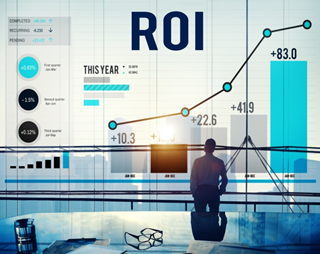 When reviewing tools for your business, it’s easy to be swayed by each option’s potential. Case in point? When you are considering business reporting software, you might tend to focus on the clarity of the charts and graphs it can create, or the ease of integrating your data into a usable format. The fact that the tool has the potential to end the endless battles with Excel and the formatting nightmares of Microsoft Word is just icing on the cake. And while those are both very appealing and worthwhile reasons to invest in reporting programs, they don’t really capture the true value of the investment.
When reviewing tools for your business, it’s easy to be swayed by each option’s potential. Case in point? When you are considering business reporting software, you might tend to focus on the clarity of the charts and graphs it can create, or the ease of integrating your data into a usable format. The fact that the tool has the potential to end the endless battles with Excel and the formatting nightmares of Microsoft Word is just icing on the cake. And while those are both very appealing and worthwhile reasons to invest in reporting programs, they don’t really capture the true value of the investment.
As a business owner concerned with the bottom line, you’re undoubtedly familiar with the concept of ROI, or return on investment. Every business owner wants to make the smallest investment possible for the biggest possible return — that’s investing 101. But all too often, when evaluating different options, entrepreneurs tend to make one of two mistakes: One, they dismiss a solution out of hand for being “too expensive,” without accurately assessing the real value of the investment, or two, they purchase the solution based on the promise to solve some problems, and are later surprised when it doesn’t “pay for itself” or it’s more costly than anticipated.
Because opting to purchase and install reporting software, like that from Windward, is a relatively substantial investment, it’s important to learn some of the basics of calculating ROI and factors to consider to avoid making the wrong decision.
ROI: An Easy Formula
Thankfully, putting the ROI into mathematical terms is relatively easy. To calculate the ROI, subtract the cost of the opportunity or product from the gain, and then divide that number by the cost. In other words, (Gain – cost)/cost = the ROI. Simply multiply the result of that number by 100 to determine the ROI in terms of percentage.
However, while the formula for calculating the ROI might be easy, determining the numbers to plug in might not always be quite so simple. There are some other factors to consider.
Real Cost. The cost of a business software program cannot only be measured in terms of the initial cost of buying it. You must account for the costs associated with installation, training users, and maintenance over the life of ownership.
 Opportunity Cost/Gain. When evaluating any solution, you need to consider opportunity cost and gain as well. For example, if by purchasing this solution, will you have to make cuts elsewhere? What do you stand to lose by making that decision? At the same time, if creating reports more efficiently frees up time for employees to work on other projects, can you reduce expenses? Can you improve client satisfaction? How will that affect your bottom line?
Opportunity Cost/Gain. When evaluating any solution, you need to consider opportunity cost and gain as well. For example, if by purchasing this solution, will you have to make cuts elsewhere? What do you stand to lose by making that decision? At the same time, if creating reports more efficiently frees up time for employees to work on other projects, can you reduce expenses? Can you improve client satisfaction? How will that affect your bottom line?
Real gain. Calculating the potential gain is often the most challenging aspect of determining ROI. Calculating the potential time saved by employees is only part of the equation, and even then, you need to determine exactly how many hours they spend creating reports and the cost in terms of salary. Gain isn’t just calculated in terms of salary and time saved, though. Again, the opportunity gain cannot be overlooked. For example, how can your salespeople grow their margins using the information presented in the reports — information they don’t currently have access to? You need to look at potential gains from all sides.
Remember that when calculating ROI that you need to use the same periods for costs and gains. For example, if you are measuring the five-year costs against one-year gains, the ROI will be skewed. For an accurate picture, be sure that every factor is being weighted equally.
Comparing Options
Calculating the ROI of a potential software investment can help you determine if the investment is worthwhile for your company, while also objectively presenting points to consider. If you are comparing multiple solutions, be sure that your measurements are equal; in other words, the ROI figure you reach on a two-year investment is going to be different from that on a five-year investment, so comparing the percentages isn’t valid.
Determining your ideal ROI figure depends on your business, your budget, and your tolerance for risk. Ideally, the higher the better, but there is no real “magic number” that you should shoot for. (cat3movie.org) In any case, when you take time to conduct these calculations, you can feel more confident in the decision you make about investing in a reporting solution.

